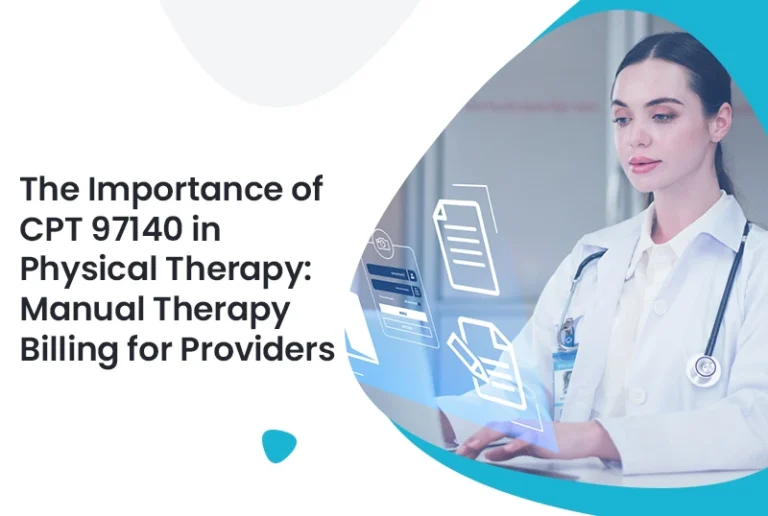Accurate billing and coding for F90 2, or Hyperkinetic Conduct Disorder, ensures proper reimbursement and protects practices from denials or audits. With evolving behavioral health regulations, aligning clinical documentation with coding practices is crucial—especially for providers lacking streamlined billing services medical support. This blog will guide healthcare providers, coders, and administrators through the essentials of accurate and effective coding.
What Is F90.2 in ICD-10?
ICD-10 Code F90.2 refers to Hyperkinetic Conduct Disorder, which is characterized by a combination of attention deficit hyperactivity symptoms and conduct disorder behaviors such as aggression, defiance, and violation of social norms. It is a more complex diagnosis than ADHD alone and is commonly seen in children and adolescents.
Key Symptoms:
- Excessive motor activity, such as fidgeting or restlessness
- Impulsivity and poor decision-making
- Frequent disobedience and defiance of authority figures
- Difficulty following rules and regulations
- Behavioral issues across multiple settings like school and home
- Onset before the age of 7, with symptoms lasting more than six months
This diagnosis requires thorough evaluation and comprehensive documentation to differentiate it from other behavioral disorders.
Want more information? Read here: Understanding CPT Modifiers: How to Properly Use Modifiers for Accurate Medical Billing
Clinical Documentation Requirements
The foundation of accurate billing begins with thorough documentation. When using F90.2, clinicians must demonstrate the presence of both hyperactivity and conduct disorder through comprehensive clinical notes.
Best Practices:
- Clearly outline DSM-5 criteria in patient assessments
- Include behavioral history from caregivers, teachers, or school reports
- Record the persistence and pervasiveness of symptoms across environments
- Provide a differential diagnosis to rule out similar conditions (e.g., ODD, bipolar disorder)
- Establish the medical necessity for ongoing therapy or medication management
This level of detail supports the justification of the F90.2 code and strengthens claims during audits.
Billing Tips for F90.2
F90.2 can be complex to bill, and its misapplication may result in delays or denials. To streamline claims, it’s crucial to understand proper CPT code usage and modifier application. Implementing trusted credentialing services ensures your practice stays aligned with payer requirements.
Billing Tips:
- Use CPT 90791 for initial psychiatric diagnostic evaluations
- Choose time-based psychotherapy codes like 90832, 90834, or 90837 based on session length
- For medication management, pair F90.2 with 99213–99215 depending on visit complexity
- Apply modifiers such as -25 when an E/M service is provided on the same day as therapy
- Ensure treatment plans are consistent with the documented diagnosis and goals
Also, be aware that this diagnosis often requires recurring appointments; documentation should reflect continued medical necessity over time.
Common CPT Codes Used with F90.2
| CPT Code | Description |
| 90791 | Psychiatric Diagnostic Evaluation |
| 90832 | Psychotherapy, 30 minutes |
| 90834 | Psychotherapy, 45 minutes |
| 90837 | Psychotherapy, 60 minutes |
| 99213–99215 | Office visit for medication management |
| 96127 | Brief emotional/behavioral assessment |
Each CPT code must be linked to specific interventions tied to F90.2, such as behavior modification, psychoeducation, or pharmacological therapy.
Compliance and Audit Readiness
Because F90.2 involves overlapping conditions and potentially sensitive diagnoses, compliance is key. Routine internal audits and payer guideline reviews are vital.
Compliance Recommendations:
- Use structured templates in EHRs for consistent documentation
- Maintain clear treatment objectives with measurable progress
- Train staff on payer-specific nuances around behavioral health coding
- Periodically review rejected or denied claims to identify trends
- Stay updated with industry news and ICD-10 changes
Audit readiness is more than a preventive strategy—it’s a critical aspect of operational efficiency.
Role of PC Ratio in Billing Efficiency
The pc ratio in medical billing, or patient-to-clinician ratio, significantly influences documentation quality. A lower ratio allows more time per patient, which is especially important when handling complex conditions like F90.2.
Importance of PC Ratio
- Reduces documentation errors by allowing more focus on patient details
- Supports accurate diagnosis through thorough evaluations
- Enhances patient engagement and provider-patient communication
- Minimizes burnout, improving long-term care quality and consistency
Billing departments should collaborate with clinical teams to optimize scheduling practices that reflect ideal PC ratios.
Leveraging EHRs and Technology
Electronic Health Records (EHRs) can simplify F90.2 documentation by offering built-in guidance and automation tools.
EHR Benefits:
- Templates designed for DSM-5 diagnostic accuracy
- Pop-up prompts for missing documentation
- Integration of billing tools for accurate CPT/ICD-10 pairing
- Secure data sharing with schools or specialists
- Real-time payer rule checks and denial prevention features
These features make it easier to provide high-quality care while reducing administrative overhead.
Final Thoughts
Coding for F90 2 demands attention to clinical, administrative, and compliance details. From the initial diagnosis to long-term care planning, every step influences reimbursement outcomes.
With the right approach to documentation and CPT code usage, providers can ensure claims are approved and patients receive the comprehensive care they need. Precision Hub is here to support your success.
(FAQs) Frequently Asked Questions
What is F90.2 used for?
F90.2 refers to Hyperkinetic Conduct Disorder, which includes both hyperactive behaviors and conduct-related problems.
How is F90.2 different from F90.0?
ADHD predominantly inattentive type differs by including behavioral disturbances such as aggression and rule-breaking.
Can adults be diagnosed with F90.2?
Yes, although primarily diagnosed in children, adults may carry the diagnosis if symptoms persist into adulthood.
What codes are commonly billed with F90.2?
Common CPT codes include 90791, 90834, 90837, and 99213–99215, depending on services provided.
How do I avoid claim denials for this diagnosis?
Ensure accurate diagnosis documentation, match services to CPT codes, and keep up with payer-specific guidelines.







